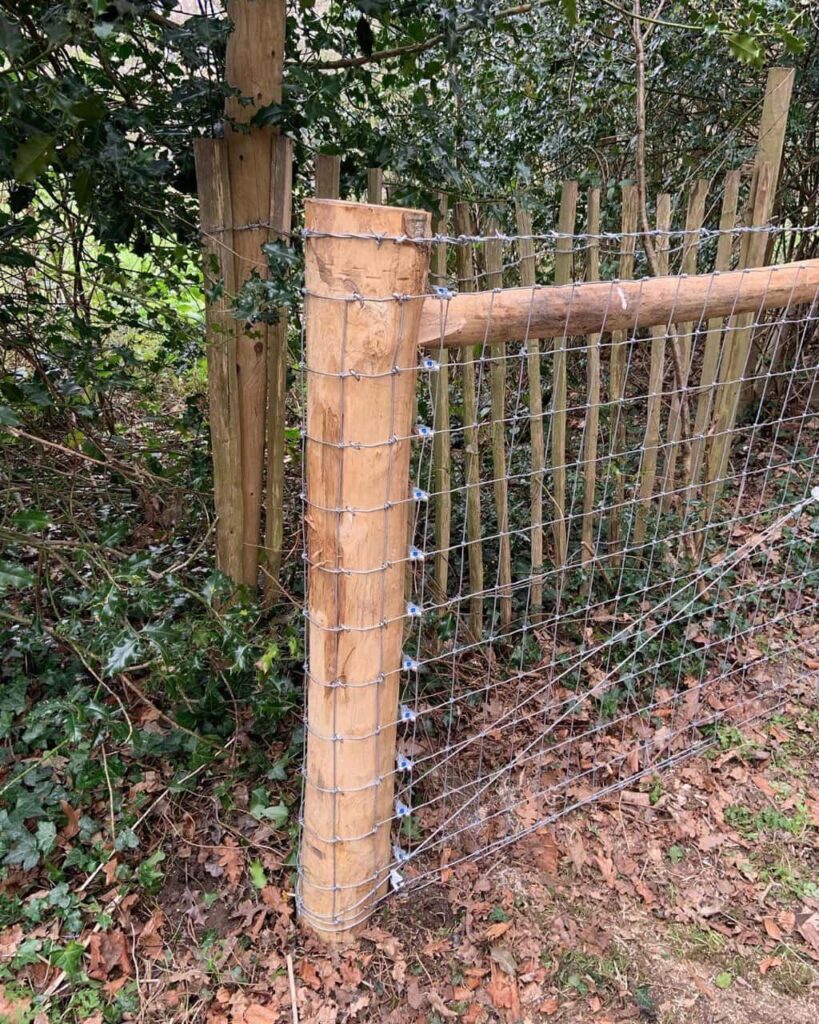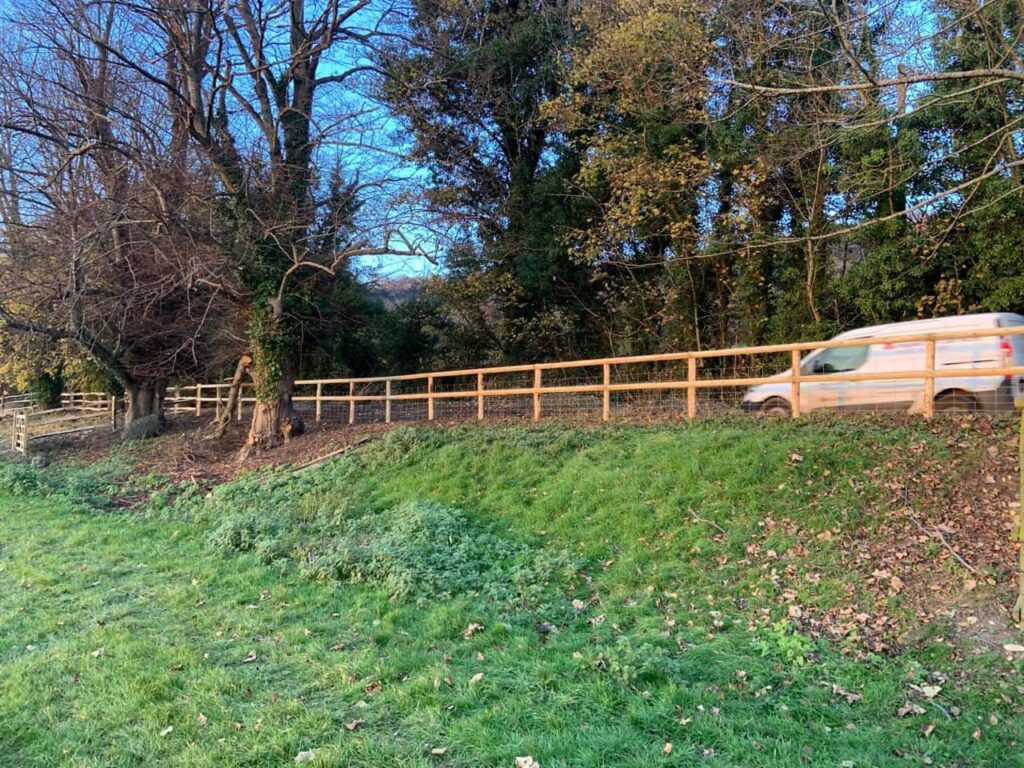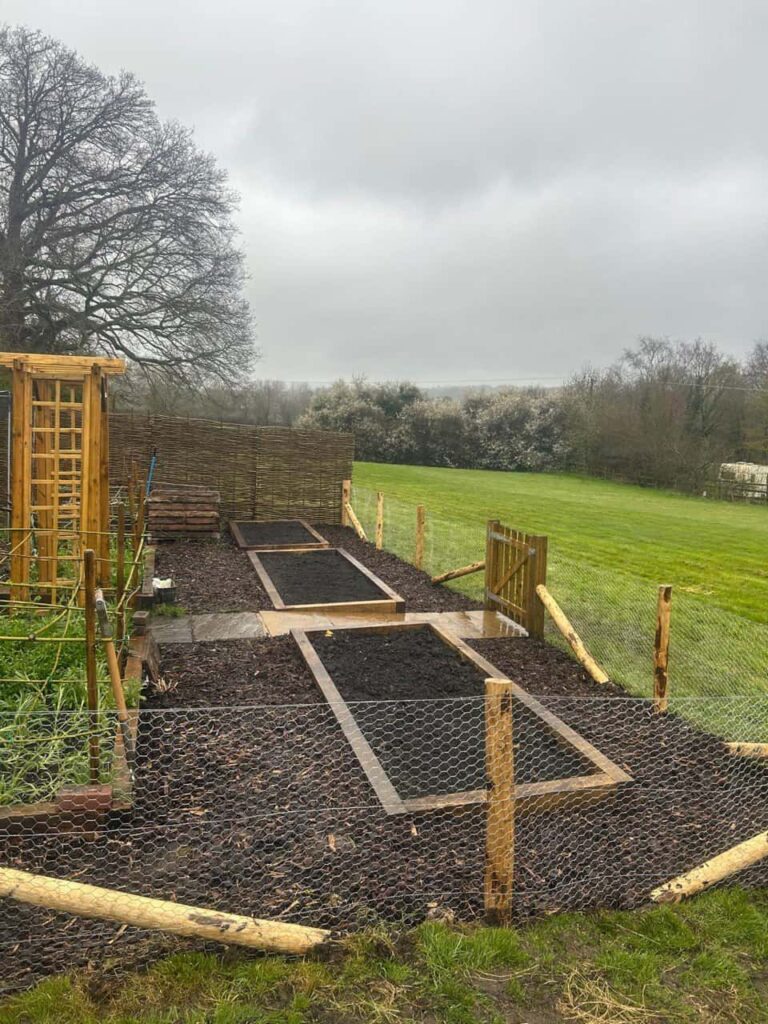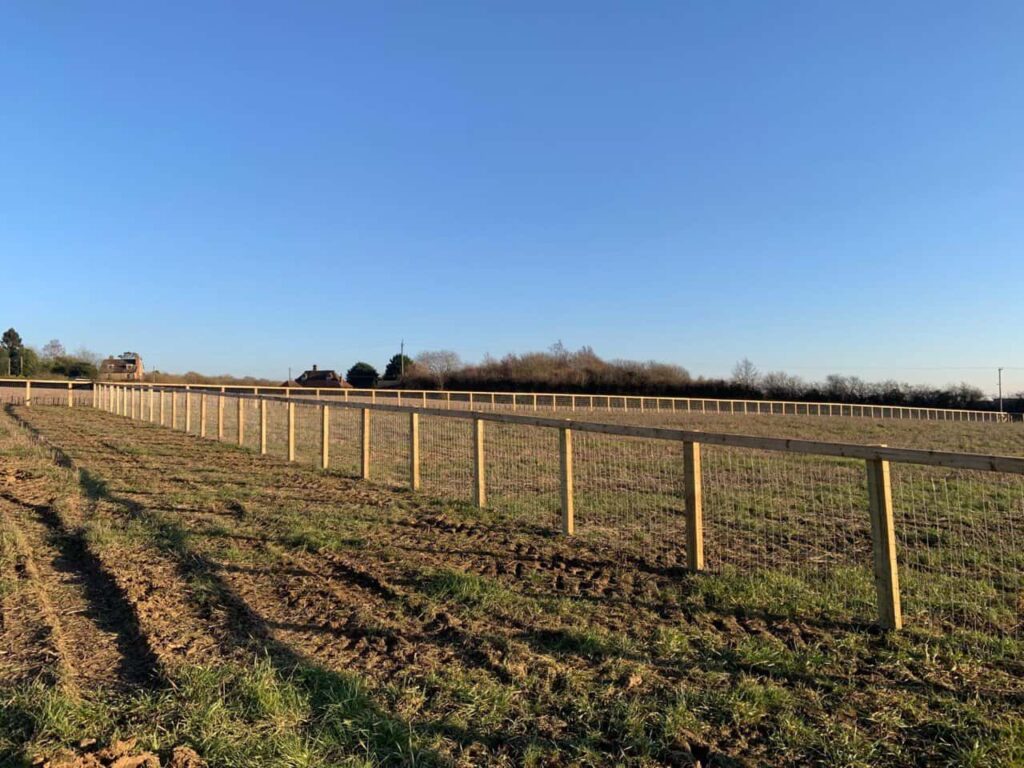STOCK FENCING
What is Stock Wire fencing?
Stock fencing, also known as livestock fencing or farm fencing, is a type of fencing specifically designed to enclose and secure livestock or farm animals within a designated area. It is a physical barrier to keep animals contained and prevent them from wandering off or entering restricted areas. Stock fencing is commonly used on farms, and rural properties to protect livestock such as cattle, horses, sheep, goats, and pigs.
Stock fencing is typically made of strong, durable materials such as high-tensile steel or woven wire mesh. It is designed to withstand the pressure and impact from animals leaning, pushing, or rubbing against it. The height of stock fencing can vary depending on the type of livestock it is intended for and the specific requirements of the property owner.
The construction of stock fencing typically involves wooden or metal posts placed at regular intervals, with the fencing material attached to these posts. It may also include additional features like gates for easy access to the enclosed area.
Overall, stock fencing plays a crucial role in ensuring livestock safety and containment while providing a boundary for managing and organising agricultural land.

What are the benefits of using stock fencing?
Using stock fencing offers several benefits for livestock management and overall farm operations. Here are some key benefits of using stock fencing:
Animal Containment: Stock fencing provides a reliable and secure enclosure for livestock, preventing them from straying, wandering onto roads, or entering neighbouring properties. It helps keep animals within designated areas, allowing for better control and management.
Grazing Management: Stock fencing enables farmers to implement effective grazing management practices. It allows for the subdivision of pastures into smaller paddocks or rotational grazing systems, promoting optimal utilisation of available forage and preventing overgrazing. Controlled grazing helps maintain healthy pasture growth and improves livestock nutrition.
Property Boundaries and Security: Stock fencing clearly defines property boundaries, preventing encroachments or disputes with neighbouring landowners. It provides a sense of security by deterring unauthorised access to the property and keeping livestock within designated areas.
Longevity and Durability: Well-constructed stock fencing using quality materials is designed to be durable and long-lasting. It can withstand the pressure and impact from livestock, reducing the need for frequent repairs or replacements.
Versatility: Stock fencing can be adapted to suit different types of livestock and specific farm requirements. Various types of stock fencing are available, such as barbed wire, high-tensile wire, woven wire, or electric fencing, allowing farmers to choose the most appropriate option for their livestock and management practices.
Overall, the use of stock fencing provides numerous benefits for livestock containment, grazing management, animal welfare, biosecurity, and property protection. It contributes to efficient farm operations and promotes a safe and secure environment for both animals and farmers.

What is the purpose of stock fencing?
Stock fencing primarily aims to enclose and secure livestock or farm animals within a designated area. Here are some specific purposes and benefits of stock fencing:
Containment: Stock fencing is used to contain livestock, such as cattle, horses, sheep, goats, and pigs, within a specific boundary. It helps prevent animals from wandering off, straying onto neighbouring properties, or entering restricted areas.
Safety: Stock fencing enhances the safety of both the livestock and the surrounding environment. It protects animals from potentially dangerous areas like roads, rivers / lakes, or hazardous substances. It also minimises the risk of livestock causing accidents or conflicts with people or other animals.
Grazing Management: Stock fencing allows farmers to control their livestock’s movement and grazing patterns. It helps divide grazing areas into smaller paddocks or rotational grazing systems, ensuring efficient utilisation of pasture and preventing overgrazing.
Protection: Stock fencing acts as a barrier to protect livestock from predators. It also helps keep out unwanted animals or pests threatening livestock or crops.
Property Boundaries: Stock fencing serves as a clear demarcation of property boundaries. It helps establish ownership and prevents disputes or encroachments by neighbouring landowners.
Animal Welfare: By providing a secure enclosure, stock fencing promotes the welfare of livestock. It prevents animals from getting lost, injured, or exposed to hazards outside their designated areas. It also reduces stress and improves the overall management and care of the animals.
Overall, stock fencing aims to create a safe, controlled, and efficient environment for managing livestock, promoting animal welfare, and safeguarding both the animals and the property.

How far apart should the posts be for stock fencing?
The spacing of posts for stock fencing can vary depending on several factors, including the type of livestock, the terrain, the type of fencing material, and the desired level of strength and stability. Here are some general guidelines for post spacing in stock fencing:
Barbed Wire Fencing: For barbed wire fencing, posts are typically spaced between 8 to 16 feet (2.4 to 4.9 meters) apart. Closer spacing is recommended for areas with uneven terrain or where animals are likely to put more pressure on the fence. Wider spacing may be suitable for flat terrain and smaller animals.
High-Tensile Wire Fencing: High-tensile wire fencing allows for wider post spacing compared to barbed wire. The posts can be spaced between 15 to 50 feet (4.6 to 15.2 meters) apart, depending on factors such as the animal type, tension on the wire, and the diameter of the wire used.
Woven Wire Fencing: Woven wire fencing generally requires closer post spacing than barbed or high-tensile wire. Posts are typically between 8 to 12 feet (2.4 to 3.7 meters) apart to provide adequate support and prevent the fence from sagging. Smaller mesh sizes may require closer spacing.
Electric Fencing: For electric fencing, post spacing can vary depending on the type of material used (wire, tape, or rope) and the strength of the electric charge. As a general guideline, posts are often spaced between 10 to 20 feet (3 to 6 meters) apart. Additional posts may be needed at corners, gates, or areas where the fence changes direction.

Can stock fencing be used for other purposes, such as garden fencing?
Yes, stock fencing can be used for other purposes beyond containing livestock and is often utilised as garden fencing or for other non-agricultural applications. Here are some scenarios where stock fencing can be used for different purposes:
Garden Fencing: Stock fencing can serve as a practical and cost-effective option for garden fencing. It can help establish boundaries, keep out unwanted animals, and provide a secure enclosure for plants, flowers, and vegetables. The height and mesh size can be adjusted to suit the garden’s specific needs, such as deterring smaller pests or providing support for climbing plants.
Pet Enclosures: Stock fencing can create enclosures for pets like dogs or chickens. It provides a secure area for pets to roam while ensuring their safety and preventing them from escaping.
Wildlife Enclosures: Stock fencing can be utilised to create wildlife enclosures or exclusion areas, particularly where protection is needed to prevent animals from damaging specific habitats or crops. It can be used to establish boundaries and control the movement of wildlife.
Boundary Fencing: Stock fencing can be employed as a boundary fence for rural properties or larger land areas. It helps establish property lines, demarcate boundaries, and provide a visible and durable barrier.
Security Fencing: In some cases, stock fencing can be used as a form of security fencing, providing a deterrent and barrier against unauthorised access. This can be relevant for rural properties, commercial sites, or other areas where security is a concern.
It’s essential to consider the specific requirements of the intended use and make any necessary adjustments to the height, mesh size, or other aspects of the stock fencing to ensure it meets the application’s needs.
Looking for stock fencing near me?
We can help. Here are just some of the areas we offer stock fencing installations and repairs:
